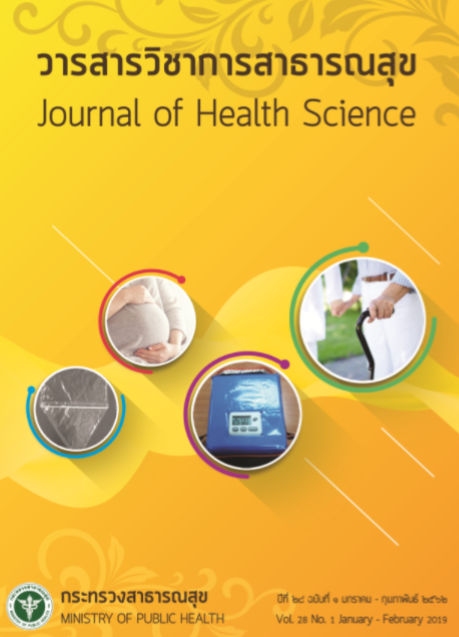Dealing with Stroke Death: Know-how Model
Keywords:
ischemic stroke, model development, stroke fast trackAbstract
Cerebrovascular disease or stroke is a leading cause of death and disability of the quality-adjusted life year globally. The average mortality from stroke in Thailand was 38.1 per 100,000 population between the years 2011 - 2013, and the in-hospital stroke death was 6.2%. A multi-dimensional strategy has been proposed to decrease this burden throughout Thailand since 2015. This descriptive study was performed to evaluate the implemented intervention; and the monitoring indicators including standard, process, outcome and complication were compared. Data of ischemic stroke patients collected at Prasat Neurological Institute from the 107 participated hospitals in the 12 health regions nationwide were analyzed. The activities based on six building blocks of health system including service delivery, health workforce, health information system, medical products and technologies, financing, and leadership and governance were categorized and evaluated periodically in 2015. There were 68,941 stroke patients admitted in the participating hospitals during the study period. The average hospital mortality rate decreased from 6.20% to 3.70%. The average re-admission rate decreased from 1.54% to 1.37%. The percentage of patients who had Barthel index at discharge higher than that at admission increased 2.97%, while the hospital length of stay decreased 0.72±1.24 day. The initiation of stroke unit, care map, intravenous thrombolytic regimen and the effective multidisciplinary team were the principle attainment factors in tertiary care hospitals; while the good referral system, stroke awareness program and network agreement were the keys of success in secondary care hospitals. In conclusion, the fundamental consideration which possibly brings to stroke model development was determined. Stroke survival increased significantly with acceptable quality of life year gained after the implementation.
Downloads
Downloads
Published
How to Cite
Issue
Section
License
Copyright (c) 2019 Journal of Health Science- วารสารวิชาการสาธารณสุข

This work is licensed under a Creative Commons Attribution-NonCommercial-NoDerivatives 4.0 International License.







